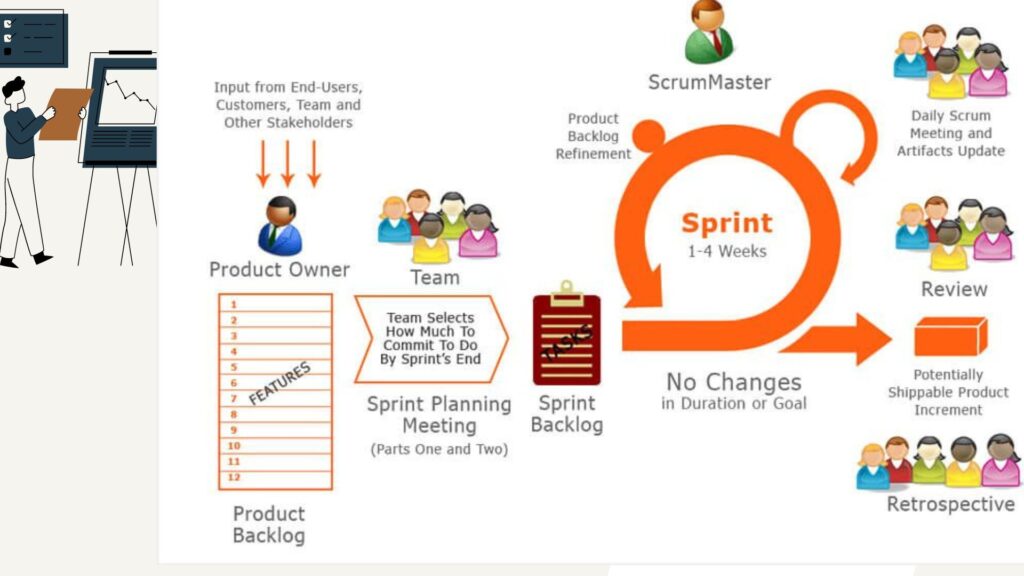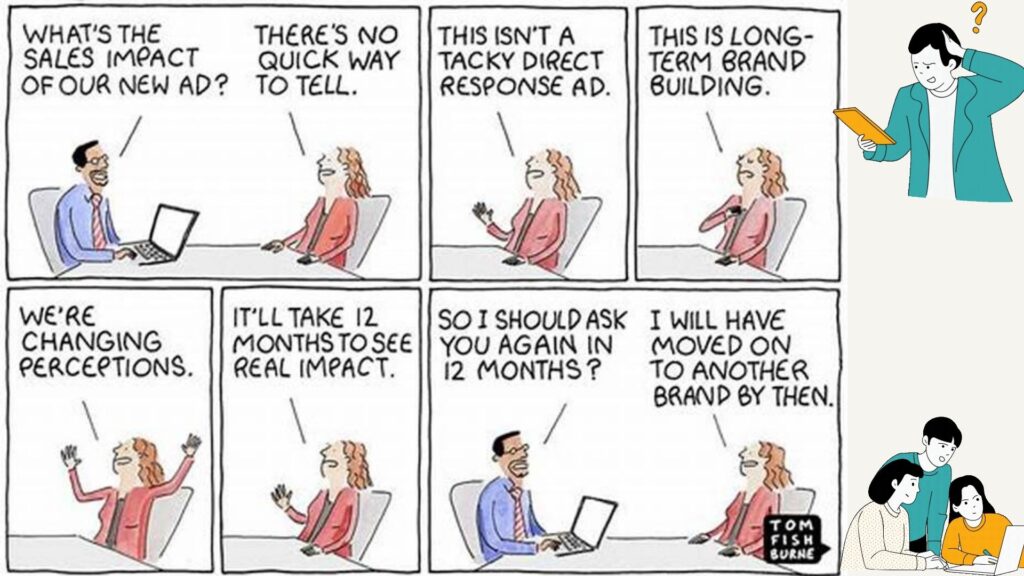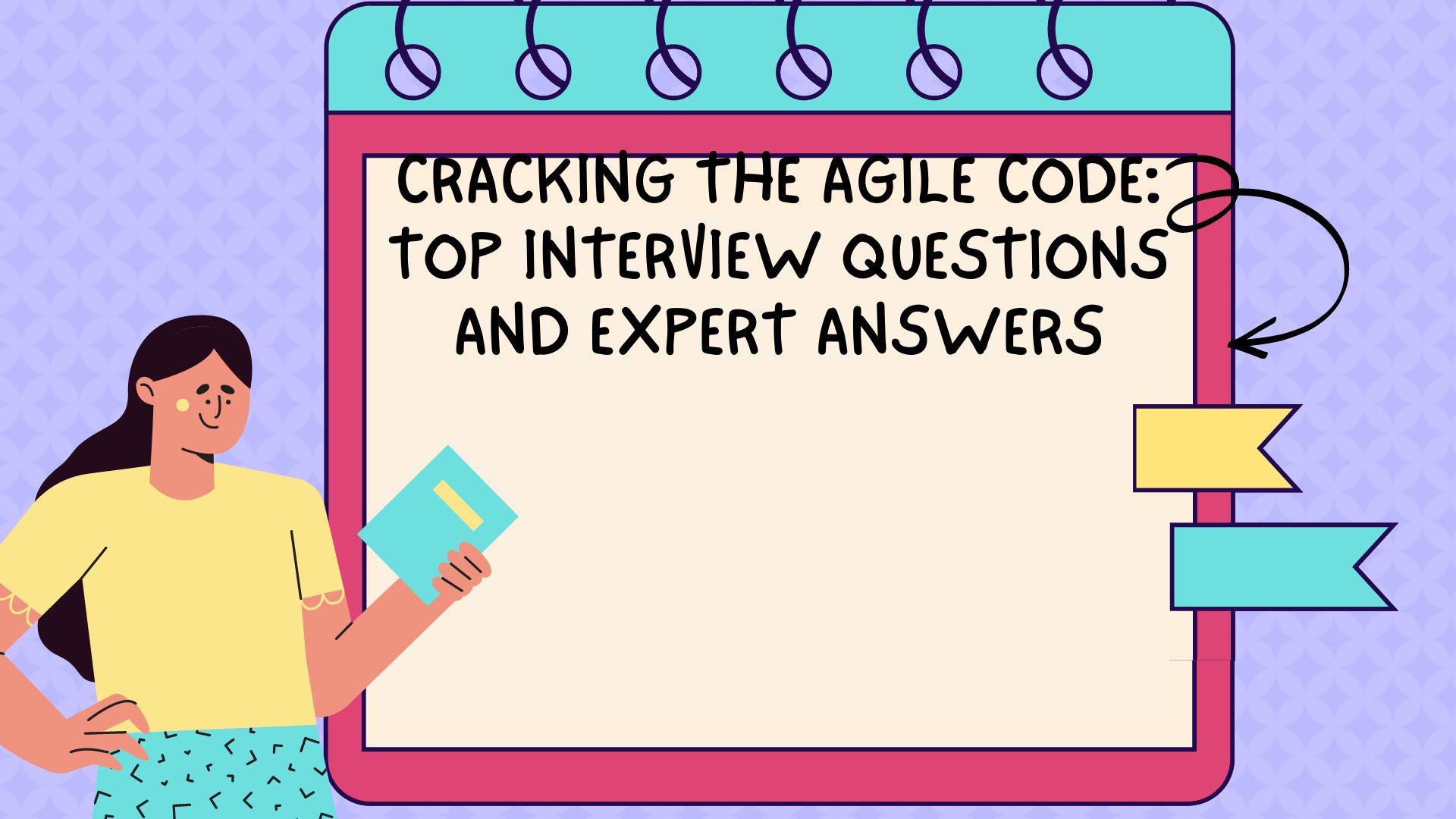Agile Introduction
Agile methodology, a dynamic and customer-centric approach to project management and product development, has gained widespread recognition for its emphasis on collaboration, adaptability, and iterative progress. Rooted in the Agile Manifesto’s core values, which prioritize individuals and interactions over processes and tools, Agile empowers cross-functional teams to deliver incremental value while responding to evolving requirements. practices, including Scrum, Kanban, and Extreme Programming, foster efficient teamwork, continuous feedback, and early delivery of functional increments. The Agile process revolves around time-boxed iterations called sprints, during which development teams work on prioritized user stories, aiming to produce a potentially shippable product increment. Regular ceremonies such as sprint planning, daily standups, and sprint reviews facilitate communication and transparency, ensuring alignment with customer needs.
In interviews, candidates can expect a range of questions that assess their understanding of Agile principles and their ability to apply them effectively. Questions might delve into the roles of key stakeholders like Product Owners and Scrum Masters, the significance of ceremonies such as Sprint Reviews and Retrospectives, and strategies for handling challenges inherent in adopting Agile. Furthermore, candidates may be asked to elaborate on Agile’s impact beyond software development, demonstrating the versatility of Agile principles in industries spanning from marketing to healthcare. Clear and concise responses that demonstrate a solid grasp of Agile’s core tenets and practical implementation will set candidates apart in their interviews.

1. What is Agile methodology?
- Answer: Agile methodology is a project management and product development approach that emphasizes flexibility, collaboration, and customer-centricity. It involves iterative and incremental development, allowing teams to adapt to changing requirements and deliver valuable increments of a product.
2. Mention the core values of Agile.
- Answer: The core values of Agile are:
- Individuals and interactions over processes and tools.
- Working software over comprehensive documentation.
- Customer collaboration over contract negotiation.
- Responding to change over following a plan.
3. Explain the Agile Manifesto.
- Answer: The Agile Manifesto is a set of guiding principles for Agile development. It emphasizes customer satisfaction, continuous delivery, and adaptability. It was formulated in 2001 by a group of software developers and includes 12 principles that prioritize customer needs and flexible development practices.

4. What are the key roles in Agile?
- Answer: The key roles in Agile include:
- Product Owner: Represents customer needs and sets priorities.
- Scrum Master: Facilitates the Scrum process and ensures team effectiveness.
- Development Team: Cross-functional group responsible for delivering increments of the product.
5. Define Scrum.
- Answer: Scrum is a specific Agile framework that organizes work into time-boxed iterations called sprints. It involves regular ceremonies such as sprint planning, daily standups, sprint reviews, and retrospectives to foster collaboration and continuous improvement.
6. What is a User Story?
- Answer: A User Story is a concise description of a feature or functionality from an end-user’s perspective” In my capacity as a [user], my desire is to [accomplish something] in order to [gain a benefit].”
7. How does Agile handle changes in requirements?
- Answer: Embraces change by accommodating new requirements throughout the development process. Changes are evaluated, prioritized, and incorporated into future iterations, ensuring that the product remains aligned with customer needs.
8. Explain the concept of “sprint” in Agile.
- Answer: A sprint is a time-boxed iteration in Agile, typically lasting 2-4 weeks. Throughout a sprint, the development team focuses on a curated list of prioritized user stories with the aim of delivering an increment of the product that could potentially be shipped.
9. What is a Burn Down Chart?
- Answer: A Burn Down Chart is a visual representation of the work remaining in a sprint or project. It tracks progress over time, helping the team monitor their pace and adapt their efforts to meet the sprint goals.
10. How does Agile promote collaboration?
- Answer: Promotes collaboration through: – Daily Standups: Short daily meetings to discuss progress and challenges. – Cross-functional Teams: Teams with diverse skills collaborating on all aspects of the product. – Continuous Feedback: Regular reviews and retrospectives to improve processes and outcomes.
11. What is the objective of a Sprint Review?
- Answer: A Sprint Review is a meeting at the end of each sprint where the development team presents the work completed during the sprint. It allows stakeholders to provide feedback and ensures alignment with project goals.
12. Mention some popular Agile frameworks other than Scrum.
- Answer: Other popular Agile frameworks include:
- Kanban: Visualizes work on a board, focusing on flow and continuous delivery.
- Extreme Programming (XP): Emphasizes engineering practices and frequent releases.
- Lean: A holistic approach to eliminating waste and maximizing value.
13. What is the role of a Product Owner?
- Answer: The Product Owner represents the customer’s interests, defines user stories, sets priorities, and ensures the development team delivers features that meet customer needs.
14. How does Agile ensure quality in development?
- Answer: Ensures quality through practices such as:
- Test-Driven Development (TDD): Formulating tests prior to writing code.
- Continuous Integration (CI): Merging code frequently to detect integration issues.
- Regular Inspections: Frequent reviews and retrospectives to identify areas for improvement.

15. Explain the concept of “velocity” in Agile.
- Answer: Velocity is a metric used in Agile to measure a team’s productivity. It represents the amount of work completed in a sprint and helps with future planning and estimation.
16. How do you handle conflicts within an Agile team?
- Answer: Conflicts are resolved through open communication, active listening, and collaboration. Scrum Masters often facilitate discussions, and teams use retrospectives to address underlying issues.
17. What is the Definition of Done (DoD)?
- Answer: The Definition of Done outlines the criteria that a user story must meet to be considered complete. It includes requirements related to coding, testing, documentation, and more.
18. How does Agile support continuous improvement?
- Answer: Core supports continuous improvement through regular retrospectives, where teams reflect on their processes and outcomes, identify areas for enhancement, and implement changes accordingly.
19. What challenges can arise when adopting Agile?
- Answer: Challenges in adopting Agile may include resistance to change, unrealistic expectations, difficulty in managing distributed teams, and maintaining clear communication among stakeholders.
20. How can Agile principles be applied beyond software development?
- Answer: Core principles can be applied to various industries, including marketing, manufacturing, and healthcare. The focus on collaboration, adaptability, and customer value can lead to improved outcomes and customer satisfaction.



